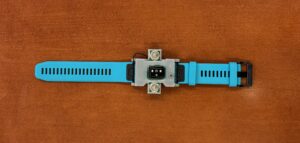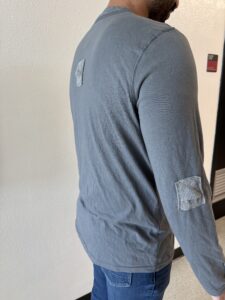Wearable technology shows promise for helping youngsters with autism and their caregivers safely navigate tense moments by flagging physiological changes and movements that often precede unsafe behaviors.
“Our goal is to use data not necessarily to predict that a harmful behavior, such as hitting, is going to happen but to predict the very early signs that a precursor behavior to hitting is about to occur,” said Amy Weitlauf, Ph.D., associate professor in the Department of Pediatrics at Vanderbilt University Medical Center. “The goal is to increase safety and calm engagement.”
Parents See Patterns
“It may seem that our children get upset out of nowhere, but parents often recognize patterns. For example, they’ll say that before their son gets upset, he starts tapping on the table,” explained Weitlauf, an expert in autism assessment as well as being the parent of two children with autism.
“It’s really important for this project specifically but also more broadly that we do our research in partnership with populations we are targeting.”
The wearable tech research team includes psychologists, behavior analysts, engineers, and a costume designer with knowledge of sensory friendly design. The team has received a National Science Foundation Smart and Connected Health grant of $1.1 million to develop the system. It is being designed first to help people with autism but has far broader potential, for use with other behavioral health diagnoses, the researcher said.
The research team engaged parents and children with autism early on in designing the system.
“It’s really important for this project specifically but also more broadly, that we do our research in partnership with populations we are targeting.”
“We wanted it to be comfortable, so that it wouldn’t trigger sensory sensitivities and would be acceptable for wearing in setting like school,” she said. During a pilot study with eight youth on the autism spectrum, children and parents offered suggestions about details such as fit and fabric.


Detecting Trouble Brewing Early
The system includes a custom sensor worn on a watchband that resembles a smartwatch. It also includes a long-sleeved shirt with a lapel microphone and motion sensors sewn into pockets. Together, the sensors track the wearer’s heart rate, perspiration, and movement.
“Our goal is to use data not necessarily to predict that a harmful behavior such as hitting is going to happen, but to predict very early signs that hitting might be about to occur. The goal is to increase safety and calm engagement.”
“Our system might tell a person who is working with a child, your patient is starting to show some signs of getting upset. They are not super upset yet, but it might be coming. Perhaps you can use a different strategy,” she explained in a Reporter story on the research.
Twenty youngsters and their caregivers will be enrolled for the research. Each dyad participates in two to three training sessions at Vanderbilt or at a community behavioral health clinic in Nashville. Data generated by the system is combined with behavioral assessments to generate predictions. The behavioral assessment protocol was designed by John Staubitz, M.Ed., a VUMC Board Certified Behavior Analyst.
Diverse Disciplines Contributing
Weitlauf, Staubitz, and Nilanjan Sarkar, Ph.D., professor of mechanical engineering with a special interest in autism, did a year of preliminary work before receiving the NSF grant.
“Dr. Sarkar and his students created the machine-learning algorithm that understands the data and provides feedback and data visualization software that clinicians can use,” she said.
Alexandra Capps, M.F.A., contributed expertise in adaptive design using fabrics. She is the fiber arts build-lab director at the Wond’ry, Vanderbilt’s Center for Innovation,
“I can’t sew!” Weitlauf admitted.
The children who would test the technology asked Capps to make sure that the seams in the garment didn’t itch and to avoid fabrics that might make the wearer feel hot.
“They did want options for different colors. Alexandra took their input when designing the wearable components,” Weitlauf said.
Potential to Bolster Self-Control
The technology has potential for people with various conditions who may be prone to unpredictable, potentially dangerous behavior that often requires intervention.
“In future, if it’s successful, it would also be great for us to think of ways to put this technology into the hands of patients and caregivers themselves. We might not need therapists as much as we do now,” Weitlauf said.





